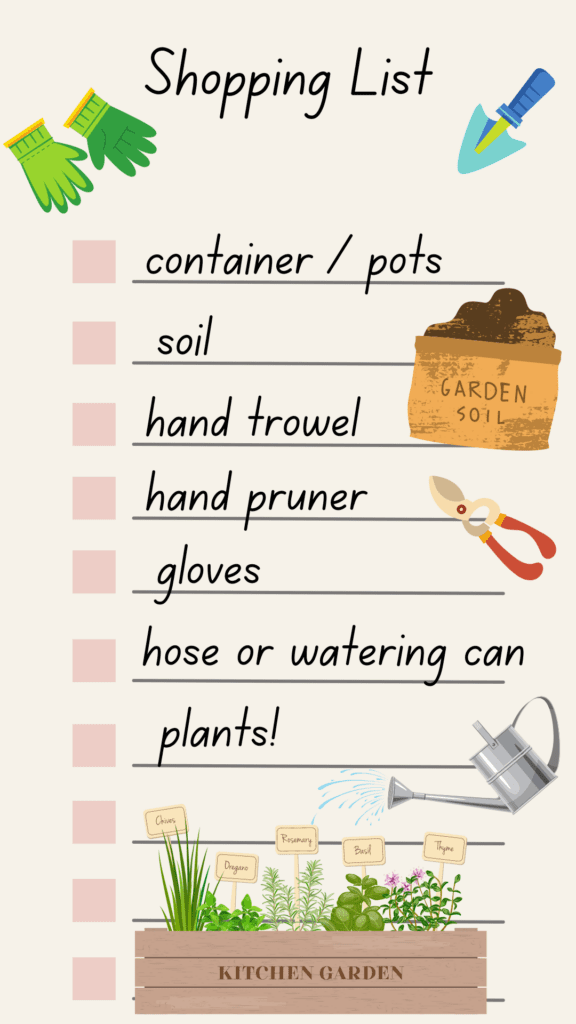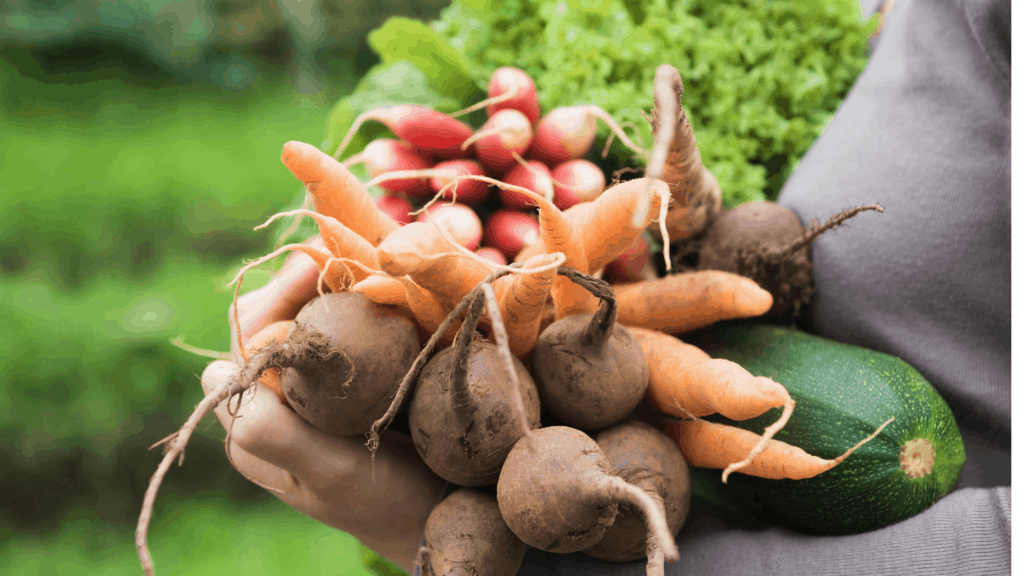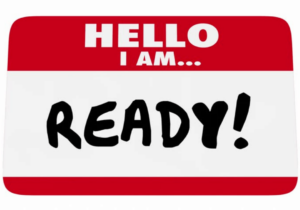Healthy Gardening for Absolute Beginners: Create Your Urban Vegetable Garden in a Weekend
Why start a garden?
If there was an easy way to get more exercise, more vitamin D, improve your diet, boost your immune system, gain self-esteem, increase your self-reliance, and improve mental health by doing ONE thing, would you try it? You might have heard of it already… healthy gardening.
Those may be bold claims, but a good amount of evidence supports that maintaining a garden and growing food, known as food gardening, is a worthwhile use of your time and energy, and can positively impact health.
Working in a garden:
- increases physical activity
- offers a great way to work in the fresh air and sunlight
- increases access to fruits, vegetables, and herbs
- gives you, the urban gardener, a sense of autonomy and accomplishment
- mood enhancement, because studies show working outside and with the soil boosts moods. In fact, “green therapy” is based on the idea that simply seeing nature can ease symptoms of stress, anxiety, and depression. Gardening for mental health rocks.
Growing your own vegetables, herbs, and fruits is a great way to add more fresh food to your plate. Healthy gardening provides produce just steps away from the kitchen, making including veggies in a dish easy and extra satisfying!
Who can do it?
Don't worry, healthy gardening doesn't require a green thumb
Gardening may seem exclusive to people who have yard space and natural green thumbs, but in reality, it is an activity that can be accessible to everyone, even if you have limited space.
Agriculture is a science, and there are many variables in food growing to factor in when creating a thriving garden. But don’t let that discourage you, everyone can grow food, and it can be done successfully using whatever resources are available.
As with all hobbies, it could get time-consuming and expensive, but here’s how you can start with what you have and begin growing some of your own food in a weekend!
Gardening, Where to Start?
Step 1 - Identify your space
The first step in creating your vegetable garden is to identify what suitable space you have available. If you have a yard, set yourself up for success and choose an easy spot for you to access and get water to. If you are limited to a balcony, patio, or deck, decide how much of that space you’d like to designate for plants.
When outdoor space is not an option, plan for an indoor garden! There are plenty of products available to help successfully grow herbs and vegetables inside. Arrange a space near a bright, sunny window.

Once you have identified where your garden will be, get an idea of the number of hours of sunlight your garden will naturally receive. For beginner gardeners, the simplest way to do this will be to observe how much sun hits the area and for how long. In general, vegetables need 5-7 hours of direct sunlight most days.
It will also be helpful to be aware of the cardinal directions, so you can place plants in your garden in a way that your plants get the maximum amount of sunlight based on the direction the sun hits your garden - north, south, east, or west, which can be done with navigation or compass apps on a smartphone.
Stand with your back to your house wall—the reading from here shows the direction the yard faces.
- Eastern exposure will get morning sunlight when it's cooler and partial shade in the afternoon.
- Western exposure will get more of the direct sunlight in the afternoon, but it will be hotter, so consider that "full sun."
- Southern exposure will get sun all day and Northern exposure can be considered "full shade."
Cardinal direction refers to the plant placement within the garden so that you are giving your plants the maximum amount of sunlight based on the direction the sun hits your garden - north, south, east, or west.
This can be done with navigation or compass apps on a smartphone.
No outdoor space and no sunny windows? Build your indoor garden near an electrical outlet, and use LED grow lights to supplement natural light.
Step 2 - Choose your plants
Now that the location for the garden has been designated, choose what plants to grow. Beginner gardeners might find that getting started with seedlings boosts a sense of accomplishment. Starting from seeds is economical and very satisfying, but getting a plant that’s already started will provide immediate feedback and instant gratification.
Find out what hardiness zone the garden is in, and if you are planning a fall garden, check the frost calendar for your area. Choose seasonal plants that will have harvesting dates before the frost. A quick way to do this is to let suppliers research for you and see what types of plants your local grocery, hardware, or garden stores are currently selling. Many garden centers sell online and will highlight seasonal products. Get a variety, but be realistic and avoid overwhelming yourself.
Consider what will do well in the unique space, but also what you enjoy eating. Set yourself up for success by producing foods you are likely to use.
Step 3 - Gather supplies
If your garden will be in containers, the first criteria are size and suitability. Next, decide whether budget or aesthetics is the priority. Vegetables and herbs can grow in bins and buckets as well as clay pots, so spending a lot of money on a container system is not critical. However, with the rising need for urban gardening solutions, dozens of products are available designed to fit in all kinds of spaces and intended to be a visual centerpiece.
Dirt and water can get messy! For container gardens, using plant saucers or another type of tray or mat under the box or pots can prevent staining on the surface the garden sits on.
Soil is an entire field of study and a vital component of a successful garden. But, again, for beginners, let the retailers do the work. The bags of garden soil and potting soil commercially available and labeled for herbs and vegetables are mixtures of dirt and organic materials blended for vegetable gardens. Garden centers will have recommendations based on their experience, and various brands can be found at many grocery and hardware stores.

Keep it simple, read the bags, and choose the mix that fits your garden (in the ground, raised bed, or containers.) Learning to fortify the soil through composting can be a follow-up project on the urban gardening journey!
An important consideration is whether neighborhood animals or pets might get into the garden. There may be a few extra steps required to protect the plants from wildlife or protect any pets that might get into the plants.
Step 4 - Do the dirty work
Decide how much time will be available to build the garden and get the plants ready to pot them. Then, allow an hour or two to pot and clean up.
Set up a workspace that can get messy. Lay a towel or tarp down to quickly clean up any dirt that spills. Add soil to the bottom of the containers, then the plant. When transplanting seedlings, keep the roots together and intact as the plant is moved into its new container. Place a top layer of soil supporting the plant near the center, then water!
How to tend a thriving garden
Now that your garden is built, give it water and attention a few times a week and enjoy the greenspace you have created. Plants want to grow.
As long as they have light and water, they will probably do just fine.

However, as you tend to the plants, you may notice changes that could require some intervention. If so, don’t get discouraged! Troubleshooting and problem-solving are part of the learning process, and you will receive all the mental and physical benefits of gardening even if you have little to harvest the first time around.
Urban gardening is an activity you can keep small and simple or grow and expand. By following these healthy gardening tips, you can start creating a beautiful outdoor space that promotes physical and mental well-being. Even with minimal experience and space, everyone can enjoy the rewards of growing food in their own home!
Sarah Gardocki wants to be your gym guide and fitness friend. As a personal trainer and health educator who has been working to support pre- and postnatal women since 2005, she loves to create comfortable spaces and connect folks to the resources that best support their own personal goals. Find other articles written by Sarah on her coach profile.
Let Sarah help you experience how confidence in the gym can impact all areas of your life!









